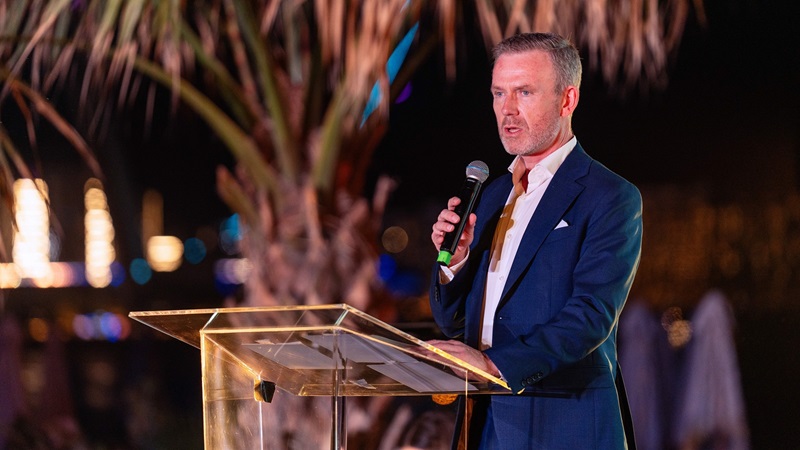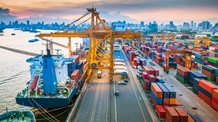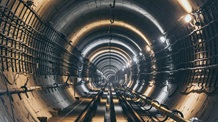Celebrating 25 years in the United Arab Emirates
Looking back on our work developing world-leading infrastructure and forward to helping the country meet its future challenges.
Commitment. Collaboration. Sustainability
Since its establishment in 1971, the United Arab Emirates has transformed from a regional trading hub into the Gulf powerhouse known across the globe. In just over 50 years, its leadership has innovatively driven enormous change, as evidenced by its flourishing and diversified economic sector to its growing society where more than 200 nationalities live and work. But arguably, one of the most momentous elements of the UAE’s rapid evolution has been the development of its world-class infrastructure.
Having successfully created such impressive infrastructure, the UAE has now set its sights on becoming a global leader in sustainable development. With a north star of becoming Net Zero by 2050 and compliance with the Paris Climate Agreement, the region has laid down the gauntlet and the future looks exciting.
At Mace, we are immensely proud to have contributed significantly to what is essentially the country’s beating heart, celebrating our 25th anniversary in the UAE this year. We relish the challenge of continuing to help it thrive as a net zero front runner.
Looking back
Opening our first office in the UAE in 1998 helped unlock the door to the wider Middle East. We’ve since grown our presence in the country to more than 450 employees, each providing top-notch expertise to a growing client base, and established ourselves as the industry leader for project management consultancy.
The many developments we’ve led include landmark buildings like Abu Dhabi’s Capital Gate. Striking, not only through its unique twisted diagrid design, but also due to its efficient solar heat-restricting façade that reduces energy consumption by 15%. This solution remains innovative today, let alone in 2011 when the project was completed.
Perhaps most significantly of all, we transformed the emirate’s desert into the spectacular Expo 2020 Dubai, leaving a lasting legacy for future generations. This project is one of the finest evocations of green building anywhere in the world, with a renewable energy system onsite producing 5.5 megawatts, 12,000 sq/m of solar paneling on the Terra Sustainability Pavilion alone and a 52% reduction of water demand compared to regulatory baselines. A perfect fusion of scale, creativity and sustainability.
Creating the standard of infrastructure that continues to grace the UAE demands not just expertise in the built environment and decarbonisation to meet the net zero by 2050 goal, but also making a long-term commitment, together with a dedication to collaboration. It’s these values, exemplified through our delivery partner model, that has seen us work alongside our Expo 2020 Dubai partner Jacobs for seven consecutive years. This proved key to laying the foundation for the largest and most successful global event ever held in the Middle East, Africa, and South Asia (MEASA) region.
Looking forward
Key to maintaining our successful relationship with the UAE for another 25 years will be continuing to help the country meet its future objectives through innovation in infrastructure, the cornerstone of which will be sustainability. Achieving net zero by 2050, in line with the Paris Agreement, will be a major challenge for a country with one of the world’s largest carbon footprints per capita. However, the UAE Government’s dedication to the cause is clearly demonstrated by plans to invest $163 billion in clean and renewable energy sources over the next three decades and establish two hydrogen oases by 2031 delivering 1.4 million tonnes of hydrogen to generate clean electricity.
Ensuring the UAE’s future infrastructure projects align with these climate goals, while still meeting future targets to develop and upgrade urban areas to create even better places to work and live, will require a suite of green solutions working in tandem.
Retrofitting and Circular Economy
The complexities of conserving raw materials and reducing waste is key to the carbon challenge. Our experience and expertise in retrofitting buildings across the globe, and reducing emissions by saving materials and waste, will make a significant contribution to meeting the country’s aim to retrofit 30,000 buildings by 2030. Going one step further, there is a global push towards establishing a circular economy, recognised in the UAE by the Abu Dhabi government’s planned investment of Dh10 billion ($2.72bn) to support circular economy regulation for manufacturing. Navigating the challenges of a circular marketplace for the built environment will require deep collaboration from policymakers, contractors, designers and the entire building lifecycle.
Alongside more conscious use of building materials, there will be a need for robust measurement of Scope 1,2 & 3 emissions that allows developers to see their carbon footprint in real-time and share this data fluidly to continue decreasing emissions and optimise the energy consumption of infrastructure.
At Mace, our shared learning and collaborative approach, allows us to bring the best people together to tackle future infrastructure challenges.
Although we’ve been present in the UAE since 1998, it feels like our work’s just begun, because there’s still so much to achieve. And we’re raring to go for another 25 years… at least!












